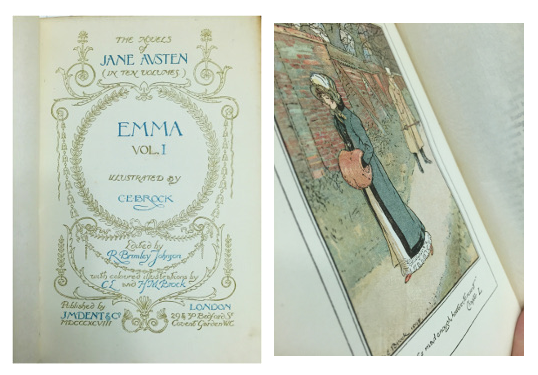Written by Louise Cowan, Trainee Liaison Librarian
This month celebrates the 200th anniversary of the publication of Jane Austen’s ‘Emma.’
One of Austen’s more comedic novels, ‘Emma’ follows the eponymous heroine as she meddles unsuccessfully in the romantic lives of her friends and neighbours. Although Austen is known for describing Emma as, ‘a heroine whom no one but myself will much like,’(Goodheart) the book’s popularity has endured in the two centuries since its publication. It has been adapted countless times for television, stage and film; including the cult-hit adaption ‘Clueless’ which takes Emma from the rural Highbury and transports her to the mansions of Beverly Hills.
According to Goodheart, it is Emma’s role as an ‘imaginist’ and her constant flights of fancy, which Austen admired and which make her such an appealing heroine within the setting of a slow and quiet rural town.
The Special Collections Library holds a beautifully illustrated edition of ‘Emma’ in our H.M.Brock Collection. Henry Matthew Brock was a prolific book and magazine illustrator who found particular success illustrating children’s books. This illustrated edition of ‘Emma’, was published in 1898 in two volumes:
Sources:
Barchas, Janine (2007) Very Austen: Accounting for the Language of Emma Nineteenth-Century Literature, University of California Press Vol. 62, No. 3 (December 2007), pp. 303-338 http://www.jstor.org/stable/10.1525/ncl.2007.62.3.303 Accessed: 01/12/2015
Emma 2015. Britannica Academic. Retrieved 01 December, 2015, from http://academic.eb.com.idpproxy.reading.ac.uk/EBchecked/topic/185921/Emma
Eugene Goodheart. “Emma: Jane Austen’s Errant Heroine.” Sewanee Review 116.4 (2008): 589-604. Project MUSE. Web. 1 Dec. 2015. https://muse-jhu-edu.idpproxy.reading.ac.uk


